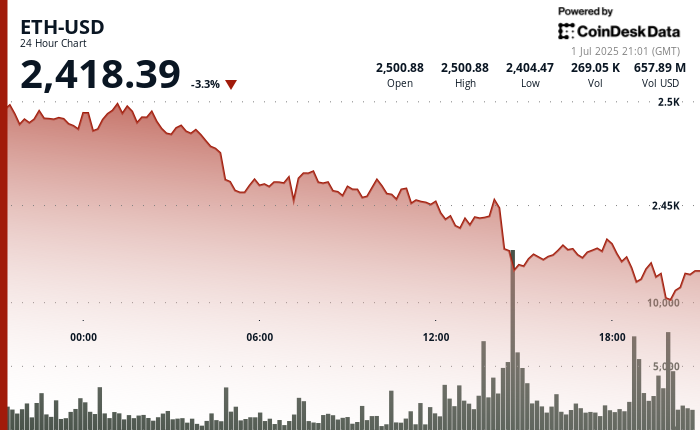RBI Accelerates Digital Rupee Rollout, Targets Global CBDC Partnerships

- The RBI is enhancing its digital rupee pilots by introducing programmability and offline capabilities to boost adoption and financial inclusion.
- It is also pursuing global CBDC collaborations to reduce cross-border transaction costs and elevate the Indian rupee’s global standing.
The Reserve Bank of India is picking up the pace on its digital rupee pilot, rolling out new features that could actually make it useful for everyday life. They’re working on stuff like programmability and offline payments, which could make the Rupee (₹) way more flexible—especially in areas where internet access is spotty. They make the digital rupee work for everyone, whether you’re in a city or deep in the countryside, and maybe even set it up to play a bigger role globally down the line.
Leveling Up India’s Digital Money System
In its 2024–25 Annual Report, the RBI laid out how it plans to scale both the retail and wholesale versions of the digital rupee. The retail rollout, which kicked off with help from 17 banks, already has over 600,000 people trying it out. Now, the RBI’s letting some non-bank players get in on the action by handing out digital rupee wallets—a move that could seriously open things up and help more people start using it.
According to the CNBC TV18 reports[, the RBI brought in four independent primary dealers to help test how this plays out in the real world—mainly stuff like bank-to-bank settlements or moving government bonds around. It’s not just a demo anymore; they’re clearly trying to push the limits and figure out what this tech can actually do.
One of the coolest features in the pipeline is programmability. Think of it like adding smart rules straight into the digital rupee—so if the government drops a subsidy, it can’t be blown on stuff it wasn’t meant for, or if a company hands out reimbursements, they can lock it to just what’s allowed. It’s a solid step toward more control and cleaner, faster payments.
They’re also testing offline payments to close the gap where internet barely exists. That means people in remote spots could still send and receive money, no signal needed. It’s a big deal for making sure everyone—especially folks outside big cities—can actually use this stuff.
India’s strong grip on real-time payments only boosts the digital rupee’s promise. Recent numbers show that UPI handles nearly half—48.5%—of all real-time payment transactions worldwide. Once the digital rupee links up with UPI, India could seriously lead the way in shaping how payments work in the future.
The RBI isn’t just focusing on improving things within the country. It’s also collaborating with the U.S and the UAE to work on digital currency projects together.
By doing this, the RBI is not only upgrading India’s digital payment system but also pushing the country to have a bigger presence in the worldwide digital currency scene.
Highlighted Crypto News Today
RBI Accelerates Digital Rupee Rollout, Targets Global CBDC Partnerships

- The RBI is enhancing its digital rupee pilots by introducing programmability and offline capabilities to boost adoption and financial inclusion.
- It is also pursuing global CBDC collaborations to reduce cross-border transaction costs and elevate the Indian rupee’s global standing.
The Reserve Bank of India is picking up the pace on its digital rupee pilot, rolling out new features that could actually make it useful for everyday life. They’re working on stuff like programmability and offline payments, which could make the Rupee (₹) way more flexible—especially in areas where internet access is spotty. They make the digital rupee work for everyone, whether you’re in a city or deep in the countryside, and maybe even set it up to play a bigger role globally down the line.
Leveling Up India’s Digital Money System
In its 2024–25 Annual Report, the RBI laid out how it plans to scale both the retail and wholesale versions of the digital rupee. The retail rollout, which kicked off with help from 17 banks, already has over 600,000 people trying it out. Now, the RBI’s letting some non-bank players get in on the action by handing out digital rupee wallets—a move that could seriously open things up and help more people start using it.
According to the CNBC TV18 reports[, the RBI brought in four independent primary dealers to help test how this plays out in the real world—mainly stuff like bank-to-bank settlements or moving government bonds around. It’s not just a demo anymore; they’re clearly trying to push the limits and figure out what this tech can actually do.
One of the coolest features in the pipeline is programmability. Think of it like adding smart rules straight into the digital rupee—so if the government drops a subsidy, it can’t be blown on stuff it wasn’t meant for, or if a company hands out reimbursements, they can lock it to just what’s allowed. It’s a solid step toward more control and cleaner, faster payments.
They’re also testing offline payments to close the gap where internet barely exists. That means people in remote spots could still send and receive money, no signal needed. It’s a big deal for making sure everyone—especially folks outside big cities—can actually use this stuff.
India’s strong grip on real-time payments only boosts the digital rupee’s promise. Recent numbers show that UPI handles nearly half—48.5%—of all real-time payment transactions worldwide. Once the digital rupee links up with UPI, India could seriously lead the way in shaping how payments work in the future.
The RBI isn’t just focusing on improving things within the country. It’s also collaborating with the U.S and the UAE to work on digital currency projects together.
By doing this, the RBI is not only upgrading India’s digital payment system but also pushing the country to have a bigger presence in the worldwide digital currency scene.
Highlighted Crypto News Today

